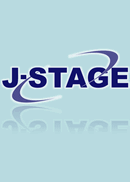Volume 10, Issue 4
Displaying 1-13 of 13 articles from this issue
- |<
- <
- 1
- >
- >|
-
1981Volume 10Issue 4 Pages 279-285
Published: December 25, 1981
Released on J-STAGE: November 27, 2012
Download PDF (597K) -
1981Volume 10Issue 4 Pages 286-293
Published: December 25, 1981
Released on J-STAGE: November 27, 2012
Download PDF (878K) -
1981Volume 10Issue 4 Pages 294-301
Published: December 25, 1981
Released on J-STAGE: November 27, 2012
Download PDF (850K) -
1981Volume 10Issue 4 Pages 302-313
Published: December 25, 1981
Released on J-STAGE: November 27, 2012
Download PDF (1298K) -
1981Volume 10Issue 4 Pages 314-318
Published: December 25, 1981
Released on J-STAGE: November 27, 2012
Download PDF (567K) -
1981Volume 10Issue 4 Pages 319-324
Published: December 25, 1981
Released on J-STAGE: November 27, 2012
Download PDF (624K) -
1981Volume 10Issue 4 Pages 325-331
Published: December 25, 1981
Released on J-STAGE: November 27, 2012
Download PDF (805K) -
1981Volume 10Issue 4 Pages 332-337
Published: December 25, 1981
Released on J-STAGE: November 27, 2012
Download PDF (591K) -
1981Volume 10Issue 4 Pages 338-344
Published: December 25, 1981
Released on J-STAGE: November 27, 2012
Download PDF (737K) -
1981Volume 10Issue 4 Pages 345-352
Published: December 25, 1981
Released on J-STAGE: November 27, 2012
Download PDF (896K) -
1981Volume 10Issue 4 Pages 353-357
Published: December 25, 1981
Released on J-STAGE: November 27, 2012
Download PDF (2314K) -
1981Volume 10Issue 4 Pages 358-363
Published: December 25, 1981
Released on J-STAGE: November 27, 2012
Download PDF (607K) -
1981Volume 10Issue 4 Pages 364-366
Published: December 25, 1981
Released on J-STAGE: November 27, 2012
Download PDF (338K)
- |<
- <
- 1
- >
- >|
